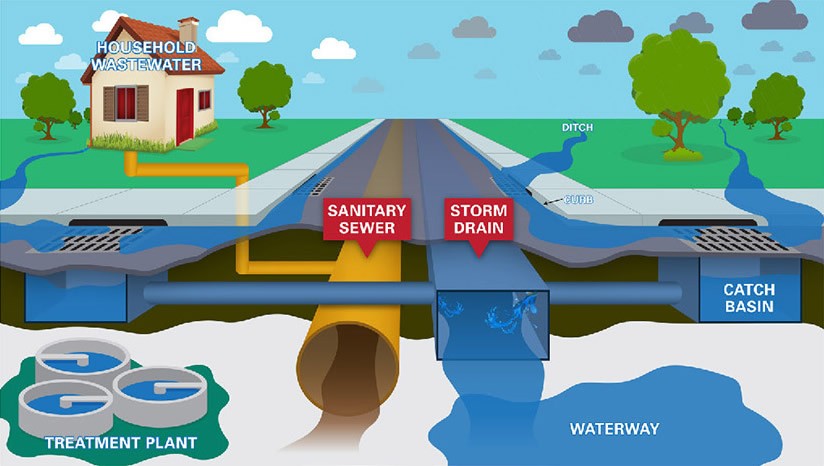What are Storm water drains? [Updated on: March 2024]

Stormwater drainage systems play a crucial role in managing monsoon rains and preventing urban flooding. The components of these systems in apartments and residential complexes are designed to efficiently collect and channel rainwater away from buildings and habitable areas. Here’s how the stormwater drainage system is structured, tailored to the Indian environment:
Drainage Pipes
- Description: Underground or in-wall pipes that collect water from rooftops, balconies, and courtyards, directing it away from the structure.
- Materials: Commonly made from PVC (Polyvinyl Chloride) or HDPE (High-Density Polyethylene) due to their durability and resistance to corrosion.
Rain Gutters
- Description: Installed along the edges of sloping roofs to gather rainwater and direct it into downpipes. This is especially crucial in areas receiving heavy monsoon rainfall.
- Materials: Typically constructed from PVC, HDPE, galvanized steel, or aluminum, chosen for their longevity and minimal maintenance requirements.
Down Pipes
- Description: Vertical pipes that transport water from rain gutters to the building's stormwater drainage or directly into the ground, preventing water accumulation on the premises.
- Materials: Made from the same materials as rain gutters for consistency and efficiency in water transportation.
Manholes
- Description: Essential for maintenance, these are access points to the stormwater drainage network, allowing for blockage removal and system inspection.
- Location: Positioned at strategic points within the apartment complex with covers flush with the ground level.
Drains
- Description: Grated outlets located in outdoor communal areas like courtyards and driveways to collect and divert excess water into the drainage system, crucial for mitigating waterlogging.
- Function: Prevents flooding and stagnation in open areas, essential during peak monsoon periods.
Septic Tanks
- Description: Though not directly part of the stormwater system, septic tanks in some standalone apartments or older residential complexes handle wastewater. They segregate solid waste from liquid, which then percolates into the ground, reducing the load on main sewage systems.
- Note: Modern urban developments in India usually connect directly to the municipal sewer system rather than using septic tanks.
Catch Basins
- Description: Structures that capture sediment and debris from stormwater before it enters the drainage system, preventing blockages.
- Importance: Essential for maintaining flow efficiency and reducing the need for frequent cleaning, especially in areas with heavy debris runoff during rains.
Sediment Traps
- Description: Similar to catch basins, these are designed to trap sand, soil, and suspended particles, allowing cleaner water to flow through the drainage system.
- Materials: Often constructed from concrete, with a design that facilitates easy sediment removal.
Storm Outlets
- Description: The points where collected stormwater is released into larger water bodies or municipal storm drains, marking the end of the apartment complex’s drainage system.
- Protection: Measures are taken to prevent erosion and pollution at these outlets, ensuring environmental compliance and community safety.
In summary, the stormwater drainage system in Indian apartments is an integral part of urban planning, designed to manage the substantial water flow during the monsoon season. Regular maintenance, cleaning of gutters, drains, catch basins, and sediment traps, along with inspections of manholes and storm outlets, are critical for the system's efficiency and longevity, ensuring that residential areas remain flood-free and hygienic.
Interested in buying a property?
Leave your details – we’ll call within 5 minutes.
Comments
No comments yet. Be the first!